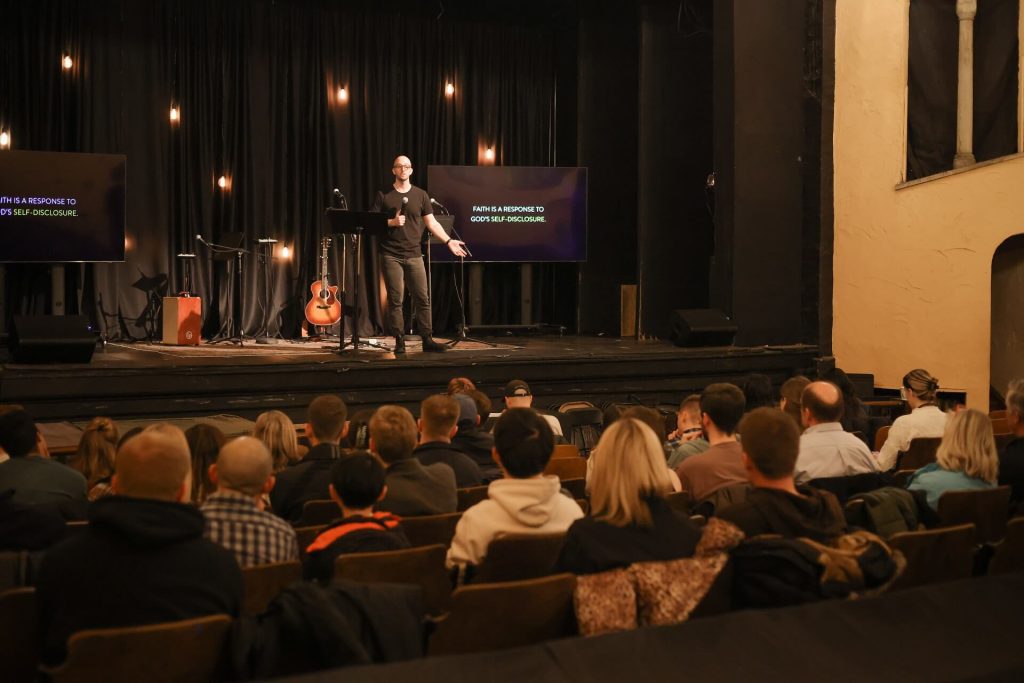Who is a worship service for?
I remember asking myself that question as a second-year seminary student. Clearly, the goal of worship is to glorify God, first and foremost. But which kinds of people are expected to be in a worship service?
Certainly, Christians are to gather for worship. But passages like 1 Corinthians 14, where Paul discusses how to welcome non-Christians or inquirers in our services, reminded me that those who don’t already identify as Christians will regularly attend and visit worship services, too.
But can a church effectively reach out to Christians and non-Christians in the same service?
Thanks to the help of some great resources and my experiences ministering in my church, I have come to see that the answer to that question is a resounding “yes!” — if the gospel shapes our worship.
Worship for Everyone
In his great article “The Singing Savior,” Edmund Clowney suggested that Christian worship is best understood as doxological evangelism. By doxology, Clowney means rejoicing in God and praising him for who he is. Doxology not only glorifies God, but edifies and strengthens existing Christians, as well. By evangelism, Clowney means the missionary task of the church: bearing witness to the wonderful works of God among non-Christians.
How might Clowney’s definition of worship shape the way pastors arrange a worship service? Consciously or not, many leaders arrange services that emphasize either doxology or evangelism. That emphasis is revealed as they imagine what they are trying to accomplish. Certainly, it must be affirmed that a worship service is about giving glory to God more than anything else (cf. Psalm 95:1–7). But do we aim to glorify God byedifying Christians or by communicating the gospel to non-Christians?

Thinking of worship as both doxology and evangelism means there’s actually no need to decide between edifying and evangelizing. We can — and should — be doing both at the same time, all the time.
There are practical steps worship leaders and pastors can take as they build these worship services (discussed in part two of this article). But none of those practical steps will matter much if the foundation of a church’s worship services is shaky. The only foundation that makes it possible is the gospel.
The Gospel Shaping Worship
The gospel is not just how someone becomes a Christian — it is how a Christian grows into the image of Christ more and more (cf. 2 Corinthians 4:4–6). We never go beyond or grow out of the gospel. Every person needs the gospel every day.
These convictions about the centrality of the gospel ought to inform the shape of our church’s worship. In fact, what we believe about the gospel already shapes our worship. As Bryan Chappell says,
“The order of worship conveys an understanding of the gospel. Whether one intends it or not, our worship patterns always communicate something… Liturgy tells a story. We tell the gospel by the way we worship.”¹
As we look at the worship services of our churches, what story is being told about the gospel?
“As we look at the worship services of our churches, what story is being told about the gospel?”
In the first church I attended as a new Christian, there were three kinds of services. The Sunday morning gathering mainly edified Christians. The weeknight service instructed Christians. Then, occasionally, an “evangelistic” service was aimed at non-Christians.
On the other end of the spectrum, there have been churches that identify their Sunday worship gatherings as “seeker-sensitive.” In such contexts, the Sunday worship service is mainly for non-Christians. Those who are Christians are encouraged to find other spaces to grow in their faith, such as small groups, Sunday school classes, and discipleship experiences.
Certainly, there are strengths to be observed in each of these approaches. And yet, if the gospel is the heart and organizing principle of our worship, then it is possible to arrange our services in such a way that evangelism and edification are integrated throughout. Chappell again writes,
“This gospel is not only directed toward evangelism or foreign missions. The message of God’s provision of grace is as vital for daily Christian living as it is for conversion… Unless we make the communication of the gospel the frame and focus of our worship, our ceremonies possess only a form of godliness without the power of God.”²

Everyone Needs the Gospel
Many people’s earliest exploration of Christianity will include attending a church service. It’s crucial that those folks not only feel welcomed in the churches they visit, but that they experience the clear proclamation of the gospel while they’re there, as well. At the same time, Christians need the gospel, too. If living in this age means anything, it means that all people — even the most devout believers — will experience doubts about their faith. When they show up at church, they need the good news of the gospel, too.
The gospel is the heart of Christian life. Let’s allow the gospel to be the heart of our worship services as well. If it is, then our services can be doxological and evangelistic, glorifying God as we edify and evangelize at the same time.
For practical tips on how to design gospel-centered worship services, read Part 2.
- Bryan Chappell, Christ-Centered Worship: Letting the Gospel Shape Our Practice (Grand Rapids: Baker, 2009), 18, 19.
- Chappell, Christ-Centered Worship, 126.



